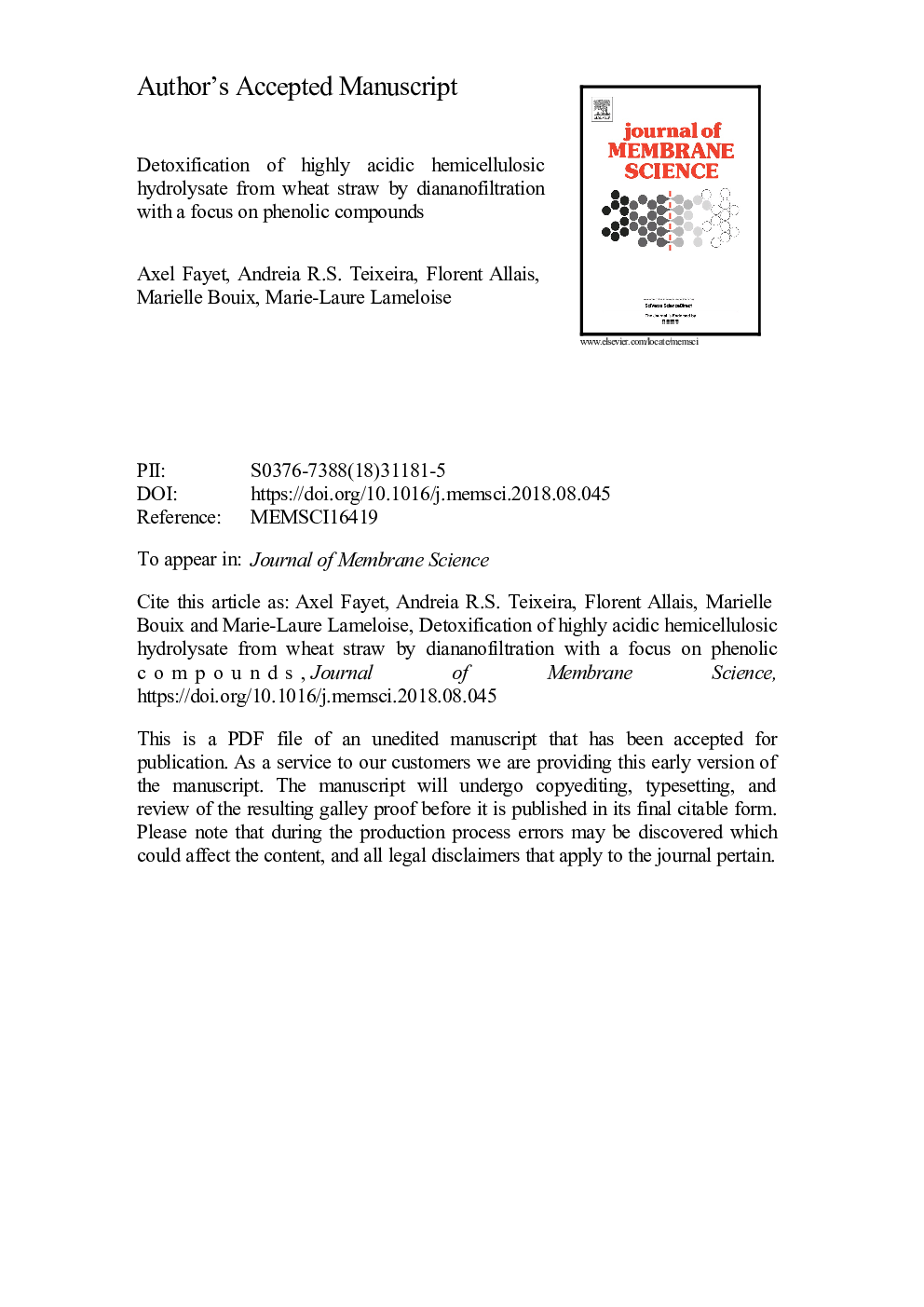| کد مقاله | کد نشریه | سال انتشار | مقاله انگلیسی | نسخه تمام متن |
|---|---|---|---|---|
| 8960306 | 1646400 | 2018 | 25 صفحه PDF | دانلود رایگان |
عنوان انگلیسی مقاله ISI
Detoxification of highly acidic hemicellulosic hydrolysate from wheat straw by diananofiltration with a focus on phenolic compounds
ترجمه فارسی عنوان
رها سازی هیدرولیزیت هیدروکسید سدیم بسیار اسیدی از کاه گندم توسط دیانانوفیلتراسیون با تمرکز بر ترکیبات فنلی
دانلود مقاله + سفارش ترجمه
دانلود مقاله ISI انگلیسی
رایگان برای ایرانیان
کلمات کلیدی
هیدرولیزات همودیالیز سم زدایی، نانوفیلتراسیون، تشخیص، ترکیبات فنل،
موضوعات مرتبط
مهندسی و علوم پایه
مهندسی شیمی
تصفیه و جداسازی
چکیده انگلیسی
Nanofiltration was studied for detoxification of lignocellulose hydrolysates obtained in harsh conditions. A hemicellulosic hydrolysate obtained from sulfuric acid steam explosion of wheat straw and presenting very low pH (=â¯1) and high osmotic pressure (28â¯bar) was studied and 8 inhibitory compounds were followed, among which 4 phenolic compounds. Several polymeric nanofiltration membranes were compared for separation performances and permeabilities; DK membrane (GE Osmonics) proved suitable with high rejection of sugars (> 99%) and lower rejections of inhibitors. Acetic acid and furfural were quasi-fully transmitted whereas the rejection of compounds ranked as follow: HMF (5-hydroxymethyl-furfural) <â¯coumaric acid <â¯levulinic acid <â¯vanillin <â¯ferulic acid <â¯syringaldehyde with values of 40%, 50%, 60%, 80%, 90% and 98%, respectively, at a permeate flux of 14â¯Lâ¯hâ1 mâ2. Diafiltration was carried out at a transmembrane pressure of 26â¯bar until 3 DV (Diafiltration Volume) to complete detoxification, and continuous and sequential-dilution modes were compared. Thanks to the permeability of the membrane to the monovalent form of sulfuric acid HSO4-, effective transmembrane pressure was increased and pH reached 2. At 3 DV, both modes showed removal performances between 92% (acetic acid and furfural) and 25% (syringaldehyde). Irreversible fouling was observed, leading to 30% permeability loss after diafiltration.
ناشر
Database: Elsevier - ScienceDirect (ساینس دایرکت)
Journal: Journal of Membrane Science - Volume 566, 15 November 2018, Pages 112-121
Journal: Journal of Membrane Science - Volume 566, 15 November 2018, Pages 112-121
نویسندگان
Axel Fayet, Andreia R.S. Teixeira, Florent Allais, Marielle Bouix, Marie-Laure Lameloise,
